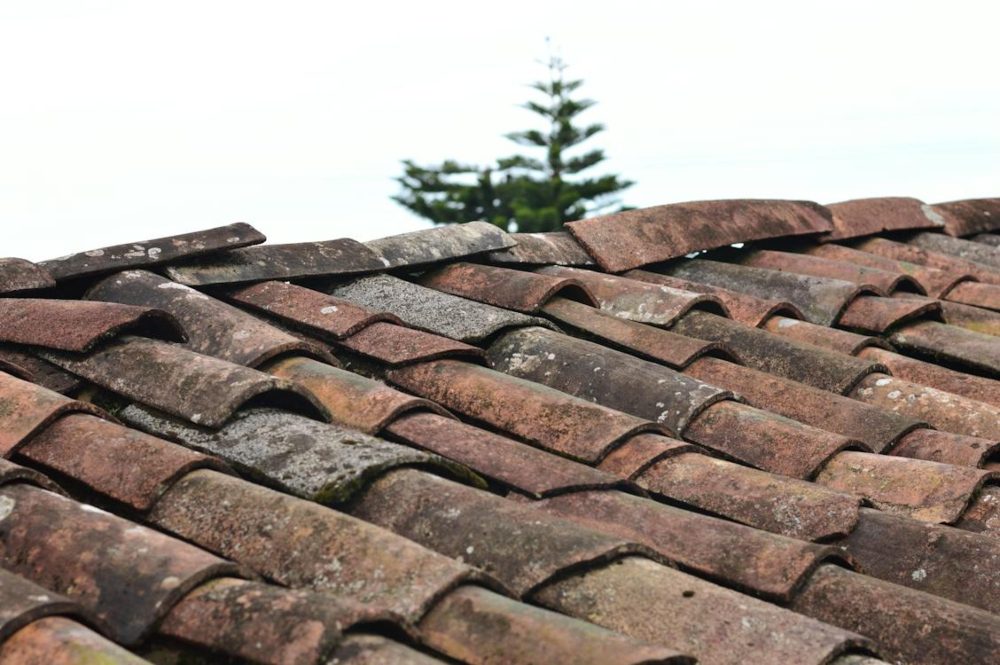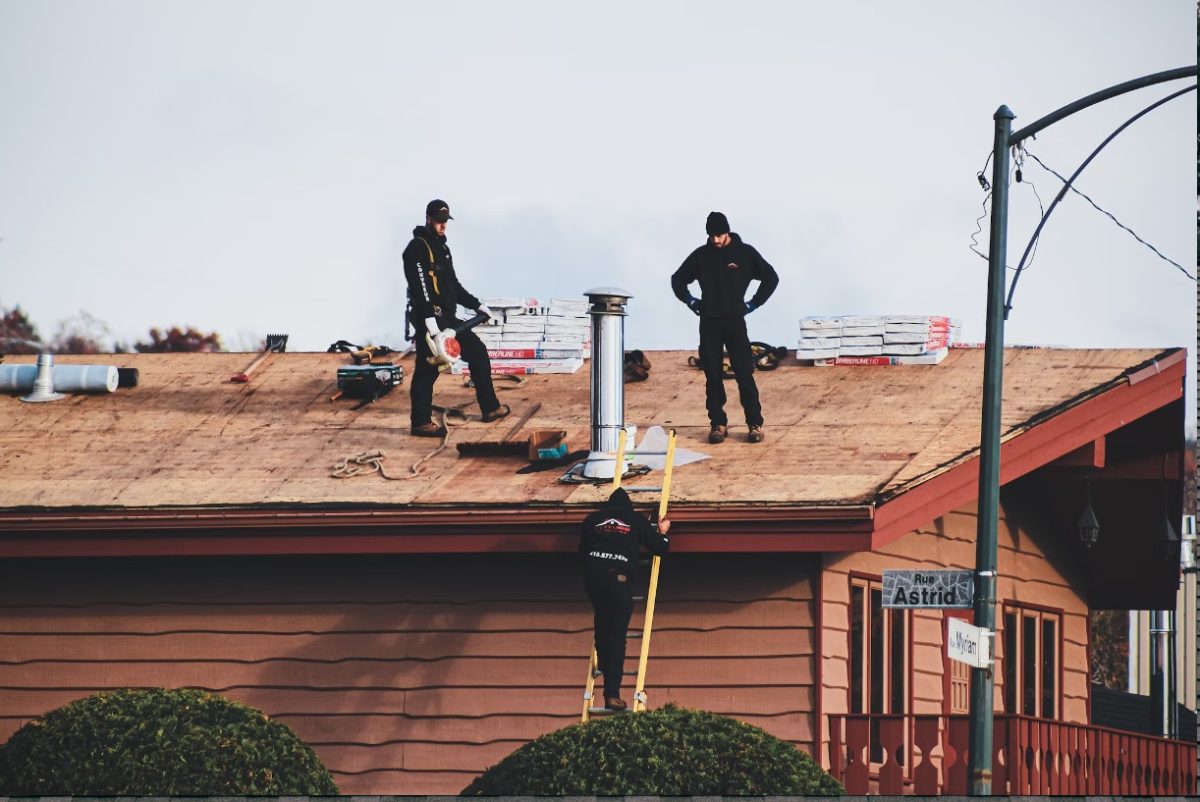Last Updated on February 14, 2025 by teamobn
Your roof can sometimes be the only defence against natural elements. Depending on its installation process and quality, it can protect your home from hailstorms, harsh winds, rain, etc. However, it cannot withstand Mother Nature for too long.
Has your roof withstood multiple years of natural elements? Then, there’s a possibility it has become damaged. Examples include continuous exposure to animals, ultraviolet rays, algae growth, etc. When that happens, you might need to fix it yourself or call in reinforcements.
In this blog, we will discuss three underrated reasons your roof can get damaged and two ways you can get it fixed.
Contents
3 Underrated Ways Nature Can Destroy Your Roof
Many believe that your roof’s #1 enemy is water. While that’s true, other underrated natural elements can also deteriorate your roofing system’s quality and lifespan. They include the following:
#1. Animals
Intruding animals like squirrels and birds can live on the roof without your knowledge. Eventually, they can destroy your roof’s overall quality. For instance, they can excrete all over, chew off the paint, etc.
The dark places in the crevices, like the chimneys and in-between cracks, are perfect homes for them. But sometimes, they can destroy your roof to access a safe place underneath it. For instance, they can chew away the shingles and peel them off to create a nest.
This damage can make your roof susceptible to leaks and mould. They’ll also nest in roof vents, leading to clogs and structural damage. 
#2. Ultraviolet (UV) Rays
Continuous exposure to UV rays can lead humans to develop sunburn, blinding eye disease, and an increased risk of cancer. Similarly, your homes aren’t safe from UV wavelengths. It can happen due to the rays’ ability to pierce solid surfaces and harm materials.
Hence, the roof is subjected to a broad spectrum of dangerous UV radiation daily. If it doesn’t have a sealing coat, there’s a high possibility that it will get damaged over time. Usually, the harsh rays can cause the shingles to dry out. This can lead to cracks.
The UV rays can also eat away at the top layer of your roofing material, making it vulnerable to natural elements like algae or rainwater. Over time, it can chemically and physically affect the roof. For example, it might become brittle, cracked, or dried.
Even the asphalt molecules can break down and lose any protective properties. As a result, the roof might start leaking water due to its compromised integrity and premature deterioration.
In severe cases, the intense heat and UV rays can fade or bleach out the paint colours, decreasing the curb appeal. The deterioration of roofing materials will also reduce your home’s resale value if left untreated.
#3. Algae
If left unclean, your roofing system can develop mould. This blue-green element is a form of algae caused by bacterial growth. Eventually, it can die and leave behind unsightly, dark streaks on the surface.
Algae can show up on your roof during humid and warm summers. It typically develops due to overhanging trees, clogged gutters, standing water, and inadequate ventilation. These issues can cause the roof to remain damp, which is ideal for fungal growth.
Over time, this infestation might result in unsightly stains or discolourations. These could only worsen if left untreated. Even then, algae might not interfere with your roofing system’s functionality. However, the side effects of mould build-up can reduce the property’s appeal.
How Can You Fix a Roof That’s Damaged by Natural Elements?
You can get your roofing fixed by a professional, or you can try to do it yourself. Either way, it’s important to consider what’s best for your house. 
#1. Hiring a Professional
If you want to repair the various details of your roof professionally, you might need to hire experts for the job. The repair services offered by these professionals can ensure that your roof doesn’t need any work for up to 20 years. They can perfectly seal cracks, change shingles, add UV-protectant paint, and more.
However, you must choose a company based on customer testimonials and industry experience. If you do that, then the professionals will approach your repair project with a dedicated work ethic.
Roof repair specialists will develop a comprehensive strategy, diagnose the problems, and discuss the next steps with you before proceeding. They understand how impaired roofing can inflict damage to your home. Hence, they’ll come up with a permanent solution to fix the damage done by animals, algae growth, and UV ray exposure.
#2. Doing It Yourself
Does your roof have minimal damage? Then, you can do the repairs yourself. The first thing you should do is assess and inspect the damage on the outside of the roof. Any apparent environmental damage will include the following instances:
- Holes in the roof and damaged shingles caused by animals.
- Structural damage and deteriorating paint quality due to algae or ultraviolet rays.
If you suspect these damages are caused by natural elements, then you can file a claim with your home insurance provider. After that, you can move ahead with the repairs.
Once you’ve assessed that your roof is only minimally damaged, you can start collecting the supplies for the DIY project. These include nail pullers, utility knives, roofing hammers, sealants, etc. Now, to repair the minimally damaged roof, you can follow these tips:
- Replace the damaged shingles with new ones using a pry bar, nail puller, and roof hammer.
- Add a few layers of watertight sealant, patching compound, or roofing cement to mend any cracks.
- Remove, re-bend, and replace the damaged flashing using nails and sealants.
- Repaint it with UV-protectants if it has withstood sun damage.
- Seal off the soffit and fascia using sealants or paint.
In summary, roofs are sturdy and durable, but they cannot withstand the wrath of Mother Nature forever. Continuous exposure to animals, ultraviolet rays, and years of algae build-up can lead to damage. When that happens, you might need to hire professionals or fix it yourself using the proper tools.






